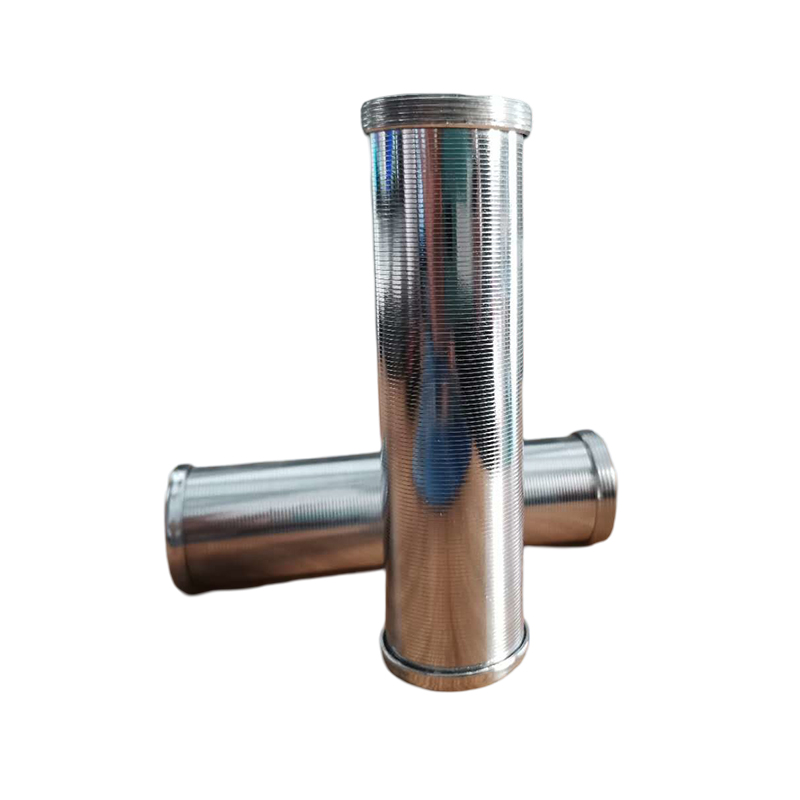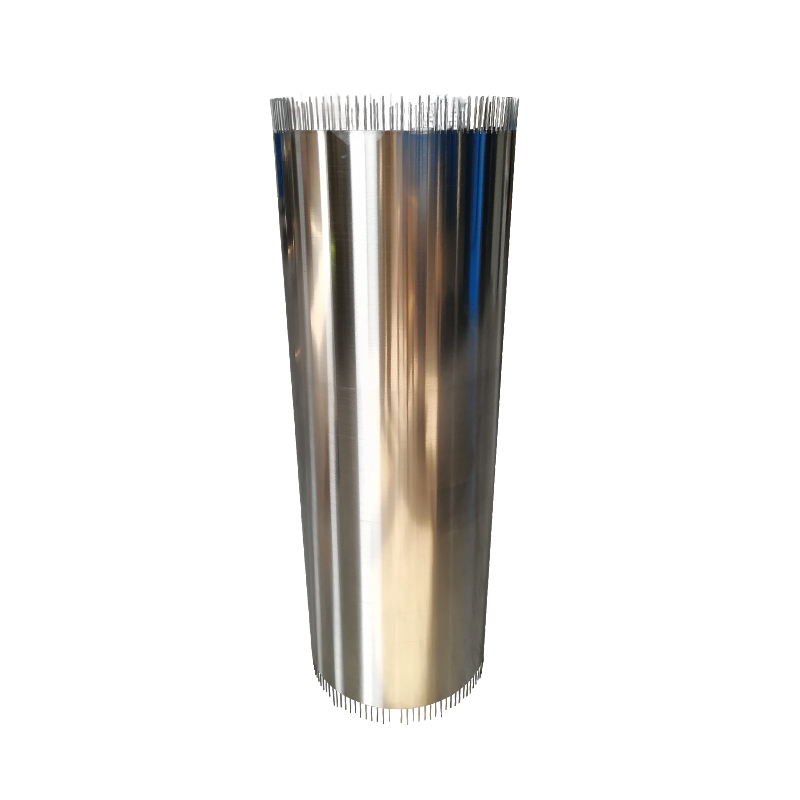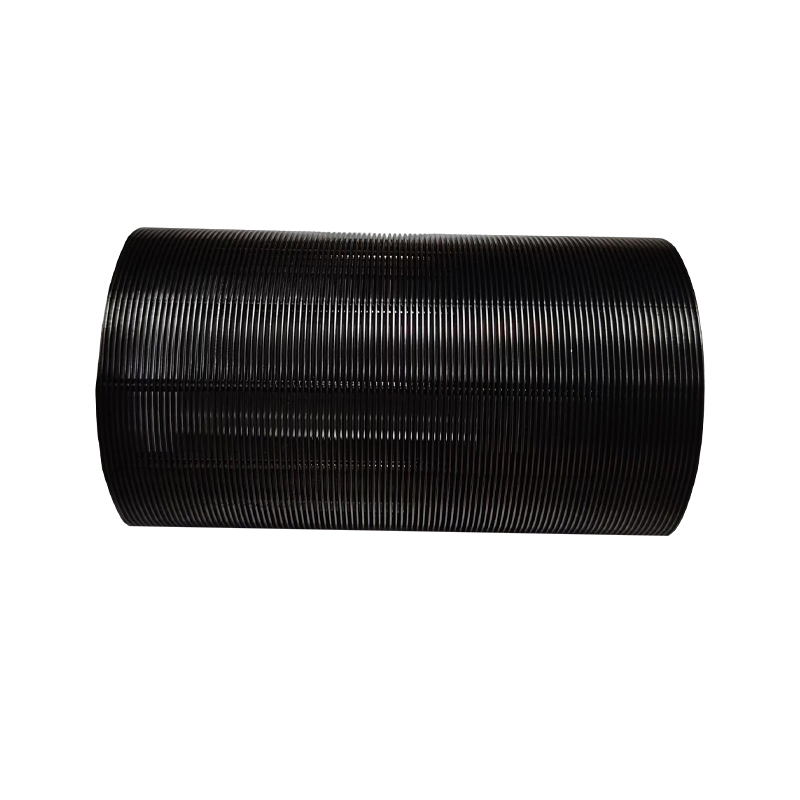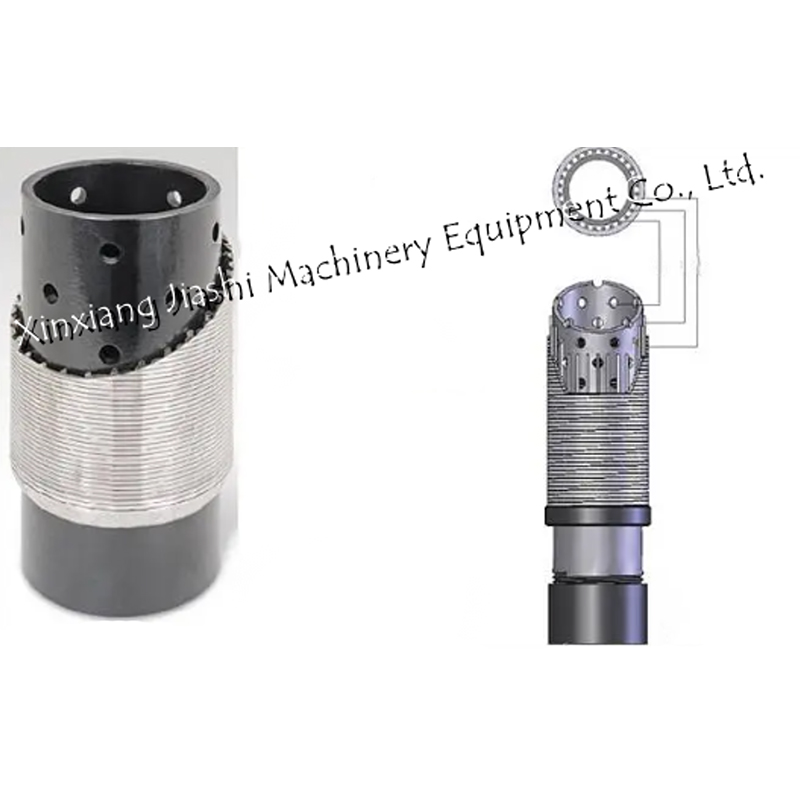How does a continuous slit design increase the effective open area and reduce flow resistance?
Release Time : 2025-08-22
In the sophisticated world of modern water treatment and solid-liquid separation technology, the rewind screen, with its unique structure and efficient performance, has become a key component in filtration systems. It's not a traditional "screen," but rather a precision-engineered wedge-shaped mesh designed to handle high-load, clogging-prone conditions. With fluid dynamics and mechanical design working seamlessly together at the microscale, the rewind screen, while simultaneously aesthetically pleasing and innovative, showcases an industrial aesthetic and technological innovation rooted in functionality.
The rewind screen's aesthetic is primarily characterized by a "mechanical beauty" derived from its precise structure and flowing lines. The entire screen is constructed from a series of precisely formed V-shaped wire strands welded or woven together with longitudinal support rods, creating a continuous, uniform slit channel. This structure visually presents a highly ordered geometric pattern, where the wedge-shaped profile of the wire strands contrasts with the rigid, straight lines of the support rods, creating a visual rhythm that balances strength and flexibility. The surface is polished or treated for corrosion resistance, resulting in a uniform color and free of burrs and weld marks, demonstrating high-precision manufacturing. As water flows through the screen, its continuous slits act like countless tiny gates, guiding the fluid in an orderly manner while trapping trapped solid particles neatly on the surface, creating a dynamic and orderly separation process. This "beauty of process," achieved through precise geometry, uniform slits, and efficient separation, imbues even a functional filter element with a remarkable level of detail and efficiency.
The core of its novelty lies in its wedge-shaped mesh structure and V-shaped cross-section, which provide blockage resistance and high-efficiency filtration. The square or round holes of traditional screens are easily trapped by impurities such as sand, gravel, and fibers, leading to frequent clogging and high maintenance costs. The novelty of the rewind screen lies in its revolutionary V-shaped cross-section—the bars are wide on the outside and narrow on the inside, creating a "rewinding" slit pattern that runs from the outside inward. The ingenuity of this design lies in the fact that when particles such as sand and gravel are impacted by the water flow, they are easily carried or swept away by the large openings on the outside, making it difficult for them to get stuck in the gaps. However, if particles attempt to enter, the wedge-shaped structure guides them toward the wider outside, where they are eventually flushed away by the water flow, thus preventing blockage and ensuring unimpeded water flow. This "self-cleaning" or "anti-blocking" mechanism is its core innovation.
The novelty lies in the optimal balance between fluid performance and mechanical strength. The "continuous gap" design not only increases the effective opening area, significantly reducing the velocity of water entering the mesh, reducing head loss, and improving water flow efficiency, but also ensures a more uniform stress distribution per unit area. This gives the mesh "strong elasticity"—it can adapt to certain pressure fluctuations and temperature changes without deformation. It also possesses "excellent mechanical properties" to withstand large internal and external pressure differentials and mechanical shock. This structure effectively prevents sand and gravel from entering the mesh under high pressure, ensuring stable filtration accuracy. Whether used for coarse filtration in waterworks, pre-treatment of industrial wastewater, or sand control in geothermal recharge wells, the rewind screen operates stably in demanding environments with high pressure and high solids loading, reducing downtime for cleaning and extending its service life.
From a practical perspective, the rewind screen's novelty lies in its significant improvement in filtration system reliability and operating costs. Through structural innovation, it fundamentally alleviates clogging, a major pain point in traditional filtration, enabling longer-lasting, more energy-efficient continuous operation. It is a key component for enhancing the intelligence and low-maintenance nature of water treatment systems.
In short, the rewind screen, with its aesthetic appeal through the geometric rhythm of its V-shaped cross-section, the orderly quality of its uniform slits, and the high-precision manufacturing process, as well as its novelty through its wedge-shaped structure for self-cleaning and anti-clogging, continuous slits for improved water flow efficiency, and optimized mechanical properties to withstand high-pressure conditions, has become a highly effective guardian in the field of solid-liquid separation. Its "beauty" lies in the order of its precise structure and the smoothness of the separation process; its "novelty" lies in the "rewind" design based on reverse thinking, which silently resolves the blockage crisis with the flushing of every drop of water, ensuring the long-term smooth and efficient operation of the filtration system.
The rewind screen's aesthetic is primarily characterized by a "mechanical beauty" derived from its precise structure and flowing lines. The entire screen is constructed from a series of precisely formed V-shaped wire strands welded or woven together with longitudinal support rods, creating a continuous, uniform slit channel. This structure visually presents a highly ordered geometric pattern, where the wedge-shaped profile of the wire strands contrasts with the rigid, straight lines of the support rods, creating a visual rhythm that balances strength and flexibility. The surface is polished or treated for corrosion resistance, resulting in a uniform color and free of burrs and weld marks, demonstrating high-precision manufacturing. As water flows through the screen, its continuous slits act like countless tiny gates, guiding the fluid in an orderly manner while trapping trapped solid particles neatly on the surface, creating a dynamic and orderly separation process. This "beauty of process," achieved through precise geometry, uniform slits, and efficient separation, imbues even a functional filter element with a remarkable level of detail and efficiency.
The core of its novelty lies in its wedge-shaped mesh structure and V-shaped cross-section, which provide blockage resistance and high-efficiency filtration. The square or round holes of traditional screens are easily trapped by impurities such as sand, gravel, and fibers, leading to frequent clogging and high maintenance costs. The novelty of the rewind screen lies in its revolutionary V-shaped cross-section—the bars are wide on the outside and narrow on the inside, creating a "rewinding" slit pattern that runs from the outside inward. The ingenuity of this design lies in the fact that when particles such as sand and gravel are impacted by the water flow, they are easily carried or swept away by the large openings on the outside, making it difficult for them to get stuck in the gaps. However, if particles attempt to enter, the wedge-shaped structure guides them toward the wider outside, where they are eventually flushed away by the water flow, thus preventing blockage and ensuring unimpeded water flow. This "self-cleaning" or "anti-blocking" mechanism is its core innovation.
The novelty lies in the optimal balance between fluid performance and mechanical strength. The "continuous gap" design not only increases the effective opening area, significantly reducing the velocity of water entering the mesh, reducing head loss, and improving water flow efficiency, but also ensures a more uniform stress distribution per unit area. This gives the mesh "strong elasticity"—it can adapt to certain pressure fluctuations and temperature changes without deformation. It also possesses "excellent mechanical properties" to withstand large internal and external pressure differentials and mechanical shock. This structure effectively prevents sand and gravel from entering the mesh under high pressure, ensuring stable filtration accuracy. Whether used for coarse filtration in waterworks, pre-treatment of industrial wastewater, or sand control in geothermal recharge wells, the rewind screen operates stably in demanding environments with high pressure and high solids loading, reducing downtime for cleaning and extending its service life.
From a practical perspective, the rewind screen's novelty lies in its significant improvement in filtration system reliability and operating costs. Through structural innovation, it fundamentally alleviates clogging, a major pain point in traditional filtration, enabling longer-lasting, more energy-efficient continuous operation. It is a key component for enhancing the intelligence and low-maintenance nature of water treatment systems.
In short, the rewind screen, with its aesthetic appeal through the geometric rhythm of its V-shaped cross-section, the orderly quality of its uniform slits, and the high-precision manufacturing process, as well as its novelty through its wedge-shaped structure for self-cleaning and anti-clogging, continuous slits for improved water flow efficiency, and optimized mechanical properties to withstand high-pressure conditions, has become a highly effective guardian in the field of solid-liquid separation. Its "beauty" lies in the order of its precise structure and the smoothness of the separation process; its "novelty" lies in the "rewind" design based on reverse thinking, which silently resolves the blockage crisis with the flushing of every drop of water, ensuring the long-term smooth and efficient operation of the filtration system.







